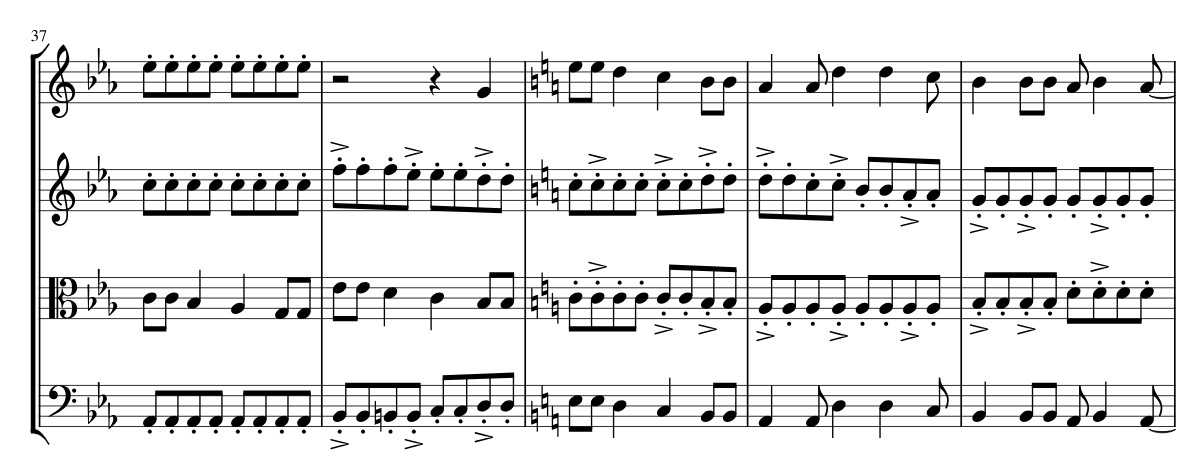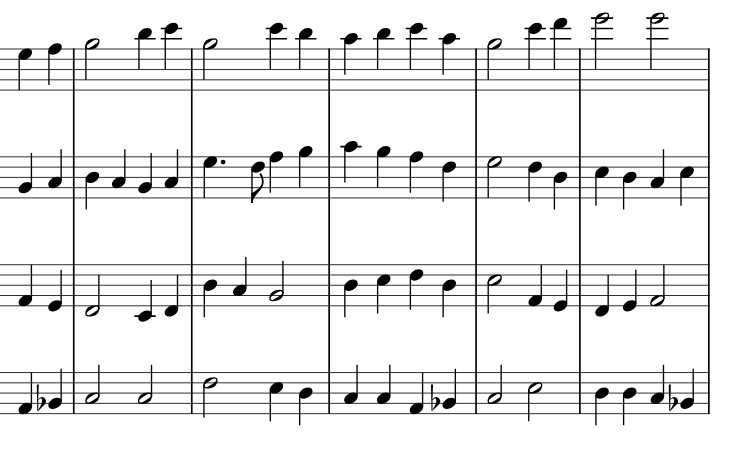Coconut Song Arrangement
August 15, 2023
Arranging the coconut song
This piece took on the form A-B-B'-A-Coda, and this post will illustrate my thought process throughout the composition process.
Background: The Coconut Song
It is a goal of mine to arrange songs that I love from my childhood, and the coconut song is definitely one of my most favourite songs that I had. It was composed by Filipino songwriter Ryan Cayabyab in 1991 and has the following lyrics:
The coconut nut is a giant nut
If you eat too much, you'll get very fat
Now, the coconut nut is a big, big nut
But this delicious nut is not a nut
It's the coco fruit (It's the coco fruit)
Of the coco tree (Of the coco tree)
From the coco palm family
There are so many uses of the coconut tree
You can build a big house for the family
All you need is to find a coconut man
If he cuts the tree, he gets the fruit free
It's the coco fruit (It's the coco fruit)
Of the coco tree (Of the coco tree)
From the coco palm family
The coconut bark for the kitchen floor
If you save some of it, you can build a door
Now, the coconut trunk, do not throw this junk
If you save some of it, you'll have the second floor
The coconut wood is very good
It can stand twenty years if you pray it would
Now, the coconut root, to tell you the truth
You can throw it or use it as firewood
The coconut leaves, good shade it gives
For the roof, for the walls up against the eaves
Now, the coconut fruit, say my relatives
Make good cannonballs up against the thieves
It has been covered by the Baylor Men's Choir, P-pop group BINI amongst others, but most importantly it was a part of my childhood that I wanted to relive.
The opening Coconut theme
What were my memories associated with the coconut song? A lot of it was from primary school - very active memories of playing police-and-thief and other chasing games, or playing football in the back of the class using rolled-up paper balls.
The coconut song lent itself very well to this theme of movement, as it is essentially a downward-going scalar movement with a call and response. Furthermore, despite being in 4/4 time, the strong beats had an element of displacement from the ordinary crotchet beats.

Bartok's string quartet number 4, movement 5 and the ending coda of Astor Piazolla's Four Seasons give a blueprint on how to create a sense of movement with directional themes.

Two techniques that are used are syncopation and tresillo. The tresillo is a division of beats such that the strong beats occur on 3+3+2, instead of 2+2+2+2 and syncopation is a division of beats 2+4+2. The tresillo can be extended into 3+3+3+3+2+2 where the repeated 3's build anticipation towards the release in the form of 2 beats of 2, which was how the main theme was introduced.
Another aspect of movement can be found in the displacement of beats from the main beats in the coconut song. When some beats are on beat and some are off, it creates an idea of unease as though the music is meant to head somewhere but doesn't really. In fact, syncopation is only truly used to highlight a cadential point within the music at the end of the first phrase, which is the only spot that I felt was truly worthy of being highlighted as a phrase end.

The piece starts off in E-flat major the first two times the coconut theme is heard. The key of three flats also happens to be the key of C minor, which meant that there was room to brighten up the sound should I be able to modulate from C minor into C major - which occurs in bar 37-38 when an A-flat major chord is used as a pivot chord to modulate into C major.
Furthermore, one aspect of transition is instability. Throughout much of the coconut theme, the cello and violins move in octave unison. Debussy's string quartet 1st movement has a section where the viola and violin move in unison, following which the viola steps down a tone such that the violin and viola play in parallel 9ths which signals a modulation. Hindemith's Schwanendreher goes into parallel sevenths at the opening cadenza to give a sense of restlessness. This composition drew heavily on that, with the cello dropping to play in parallel 9ths to signal the incoming second section.
Contrast: the Cow Song
Another song that featured very prominently in my childhood was the Cow Song, by Arrogant Worms. My memory of this comes from specific memories in Primary 4. Back then, our lessons were held at a block far away from the other students and how we got in was by waiting for the gate to open at 7am. For me the school bus always arrived at school at 6.30am, so I always had random things to do until 7. I still remember the table opposite the collection point where we sat, and the different people there. The two songs that I distinctly associate with (different) people are the Planet Unicorn Theme Song and the Cow Song. To this day I still have a lot of questions but those are the songs that stuck with me.
The overarching mood in this section is that of stasis - not just in the memories associated with the song, but also in the lyrics inherent in the song itself. This manifested as a chorale section in the violins and cello, with a dotted rhythm accompaniment in the viola. Compared to the first section, this dotted rhythm accompaniment is almost completely static. The harmony is also mostly consisting of just tonic and dominant chords, rather than a progression through various chords.
Another theme is briefly hinted at by the violin during the first introduction of the cow song theme: the Rasa Sayang theme. It's a Malay song which means "feelings of love".
Polytonality occurs when there is more than one tonal centre in the harmony. Most notably, it was used in Petrushka where the usage of F-sharp and C chords create a sense of dissonance. I thought that since the two themes of Rasa Sayang and the cow song went well together, it would be nice to have the themes be a fifth apart and it does seem to work rather well with the violin taking the top line and the cello the bottom.

The section that comes after is an abbreviated version of the "I am cow, hear me moo" line that becomes an ostinato (not really, but it is the best term I could come up with) in the 2nd violin line. The theme that is played by the first violin was something I thought could stand on its own, but it felt more appropriate to place it here.
Coda: bringing it all together
After the recap of the coconut song, we have the cow song theme and coconut song theme alternating in the last eleven bars. First it is the cow song theme in the cello - but instead of short-short-long it is now long-long-short with our familiar tresillo rhythm.
Seven bars before the end, we have a seeming cadential point returning. This leads to one last call of the coconut song and subsequently the cow song with the strong beat displaced with a final double tresillo in the accompaniment.
Conclusions
I really enjoyed working on this! It's definitely not perfect - there are so many cases of parallel fifths and in the hands of more capable writers the coconut song definitely has a lot more potential. I think that on the whole, this was a good use of the thematic material and development.
I do think I'll arrange more songs that I remember from my childhood as there are so many memories I want to relive - memories that I won't get to relive otherwise as the old campus of my school has already been demolished and redeveloped.